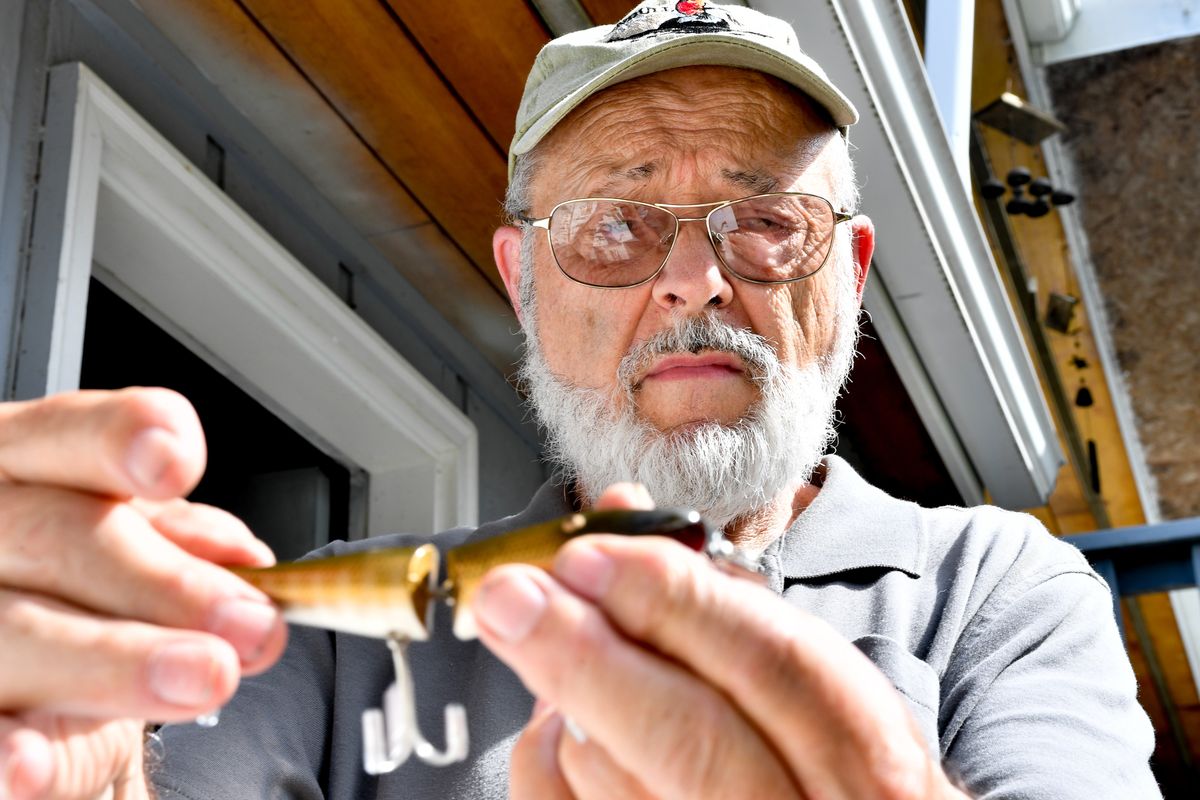The Collector: Retired wildlife biologist has acquired more than 300 bass fishing lures

You might say Gerald Hickman’s collection is alluring. He certainly hopes it is.
Hickman has collected more than 300 bass fishing lures.
“They say they make the lures to catch the fishermen as well as the fish,” Hickman said.
He got hooked on fishing as a kid growing up in Genesee, Idaho.
“Dad always caught the biggest fish,” Hickman said. “My brother and I wanted to catch a fish bigger than his, so we started buying Heddon lures.”
Established in Michigan in 1898, Heddon is the oldest lure company still in production. Hickman and his brother purchased their products via mail order.
Though he’s fished all his life, he didn’t start collecting in earnest until he retired from his career as a wildlife biologist in 2010. Then he began scouring garage sales, thrift shops and online forums.
Vintage Heddon lures are his favorite, including a Dowagiac from 1914, with the name engraved on its lip.
He has more than 100 Heddon lures. The rest of his collection is from manufacturers such as Arbogast, Creek Chub, Paw Paw and Rebel.
Hickman’s oldest lure dates to 1904 and was given to him by his wife’s cousin when they were on a trip to Maine to visit family.
“Characteristics of really old lures include two treble hooks and propellers on the nose,” he said. “Most of them are made of wood or metal and have glass eyes.
“The glass eyes are a sign of higher quality. They may or may not help catch fish.”
A Creek Chub spinner circa 1915 sports horsehair fins.
“I don’t think they use horsehair anymore,” Hickman said.
He has several “weedless” models that feature a wire poking up, to keep the bait from getting tangled in the weeds.
Among his more unusual items are “Twin Minns” made by Staley-Johnson in Indiana in the 1940s. Staley-Johnson lures were made for just a few years because production halted sometime in 1948 due to shortages after the war.
Like most collectibles, unused lures in the original packaging have the most value. Hickman has a couple of still-boxed novelty lures, including the Prez, which looks like a peanut and dates to the Jimmy Carter presidency. He also has an unopened Arbogast “Jitterbug” from the early 1960s.
While he’s been offered more than $200 for one of his older lures, Hickman said the most he’s paid is $50.
What he enjoys most about his collection is that it reminds him of all the places he’s fished. From Oregon to Alaska, to Maine and Arizona, he’s always looking for a good fishing spot. Locally, his favorite place is Rock Lake in Whitman County.
“It’s geologically interesting to fish and boat there,” he said.
He said he caught the most fish in Alaska.
When fishing, Hickman favors “Dardevle” lures by Eppinger, each one featuring a tiny horned devil head.
“I think the most successful lures are the ones that act like a fish,” he said. “But who knows what the fish think?”
As he surveyed his collection of poppers, plunkers and ploppers, Hickman said he’d still like to find one of the lures he used as a boy.
“I don’t have a good Heddon Flutter,” he said. “My brother and I used them.”
He may still be searching for that elusive bait, but he eventually achieved one childhood dream.
“At age 72, I caught a 6½-pound fish at Sprague Lake,” he said. “I finally caught a fish bigger than Dad’s.”